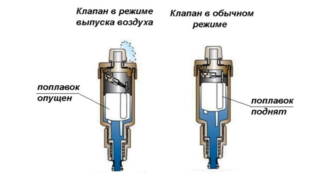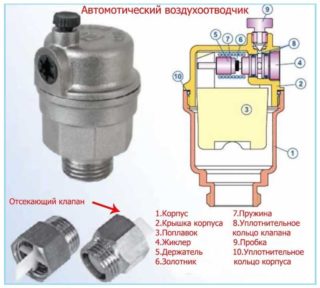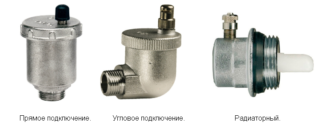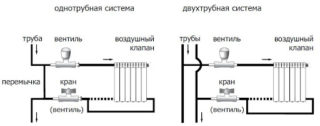All heating water systems are characterized by the appearance of air jams. This problem can be easily solved if the heating circuits are open, in such situations the air freely flows naturally. But in closed heating systems it is necessary to install special devices that will help to remove air from the mains. An automatic air valve will help solve this problem.
The need for an automatic air valve
The air discharge valve from the water supply system must be installed for the following reasons:
- for bleeding air drops that have accumulated in the heating main;
- in order to reduce the uneven heating of radiators, which is provoked by the formation of air jams;
- for the need to provide protection for part of the pipeline, which is laid at a height, for example, in the ceiling area.
The higher the heating pipes are raised, the greater the risk of air congestion. If it is not possible to eliminate the phenomenon, the movement of the coolant is disrupted, which leads to a deterioration in the quality of heating the room.
The main task and principle of work
 Moving along the circuit of the highway, the coolant will go the path of less resistance. If there is an air plug in the pipe, this will be an obstacle to the passage of water. As a result, batteries in which air has accumulated warm up only partially or remain completely cold. Airing not only reduces the quality of heating, but also disrupts the operation of all elements of the system. To eliminate the negative consequences, you need to install an automatic air vent.
Moving along the circuit of the highway, the coolant will go the path of less resistance. If there is an air plug in the pipe, this will be an obstacle to the passage of water. As a result, batteries in which air has accumulated warm up only partially or remain completely cold. Airing not only reduces the quality of heating, but also disrupts the operation of all elements of the system. To eliminate the negative consequences, you need to install an automatic air vent.
If the heating system does not have an automatic air vent, you may encounter the following problems:
- the boiler will fail as a result of constant overheating;
- the heater will corrode;
- the boiler will operate at maximum power, but the radiators will remain slightly warm;
- in severe frosts, the risk of freezing part of the circuit or one of the radiators increases;
- Due to sudden pressure surges, damage to the system will result in leakage.
An automatic valve for bleeding air from the heating system will help to solve the problem without human intervention. If the system will work properly and there will be no air in it, the float of the device will float to the surface and press the plug on the outlet. If the water level in the radiator decreases due to the formation of a plug, the float drops down, this opens the valve for bleeding
Valve device
 An automatic air vent consists of a cylinder in which a plastic float is integrated. The device is installed vertically, in normal operating mode, its inner part will be tilted under the influence of a thermal carrier. The air vent is equipped with a needle rod to which the float is fixed to the lever.
An automatic air vent consists of a cylinder in which a plastic float is integrated. The device is installed vertically, in normal operating mode, its inner part will be tilted under the influence of a thermal carrier. The air vent is equipped with a needle rod to which the float is fixed to the lever.
As soon as a plug forms in the pipe, the air will tend to the highest point in the heating circuit. If a valve that works automatically is mounted in this place, the heat carrier will be pushed out by air. In the process of water displacement, the float will lower, opening the valve. As a result, air will escape from the pipes and radiator, and the space will be filled with water.
The air inlet valve is scaled during operation.This leads to disruption of its operation, loss of tightness. An automatic valve for venting air can only be replaced; it cannot be repaired.
Types of Automatic Air Valves
According to the performance, the devices are divided into three types.
Direct traditional
Direct vent valves are the most common. They are used to bleed air at the highest points of the pipeline. To do this, they are installed upstairs in vertical risers.
Angular
Instead of a conventional crane, angular structures can be installed to automatically lower the air plug from the heating system. This equipment option is most relevant if there are always gases in the line, especially a lot of them are present in the radiator part.
Special for radiators
Radiator-type devices are designed specifically for installation directly on batteries. For this, they have made a threaded connection. Such valves are mounted on aluminum and bimetallic radiators, on those devices that come in contact with water. In this case, the installation of a radiator device is necessary.
Location and Installation
When installing the air release valve, the following factors must be taken into account:
- Air in the water supply and in the heating system accumulates at the highest points of the equipment. This feature is present in radiators, collectors for underfloor heating and heating boilers.
- If the installation location is incorrectly selected, the heat balance will be disturbed. Because of this, the heating efficiency of the room will significantly decrease. If we are talking about a system of underfloor heating, with improper installation, whole unheated zones are formed.
To avoid the consequences of improper installation, it is recommended to follow the advice of specialists. The air vent must be installed in the following places:
- in the area where the pump and mixing unit of the heating boiler is located;
- for underfloor heating - on equipment collectors;
- on additional equipment of the heating boiler, it is necessary to select the highest point near the expansion tank;
- on standard radiators.
The insulated valve can be mounted on the hydraulic arrow.
Causes of air and air congestion
 Airing the heating system can occur for several reasons:
Airing the heating system can occur for several reasons:
- The pipes fill up with coolant too quickly. Due to the increased speed, the water does not have time to displace air naturally from the highway. The coolant should begin to flow in from the bottom so that air escapes upward through the open hole.
- Preparatory work was not carried out before starting the heating system. As a result, the heat carrier contains an increased amount of soluble gases. During heating of the water, they separate and accumulate in the pipes, forming a cork.
- Repair work was carried out to replace individual parts of the pipeline, but the water was not completely drained.
- Corrosion began in the pipes. Upon contact of the metal with oxygen, hydrogen is released, which gradually accumulates in the heating system.
- The leak in the heat main was broken.
Installing an air vent will help to avoid problems due to the accumulation of air masses in the pipeline. Thanks to the device, it is possible to improve the quality of heating and extend the life of radiators.





